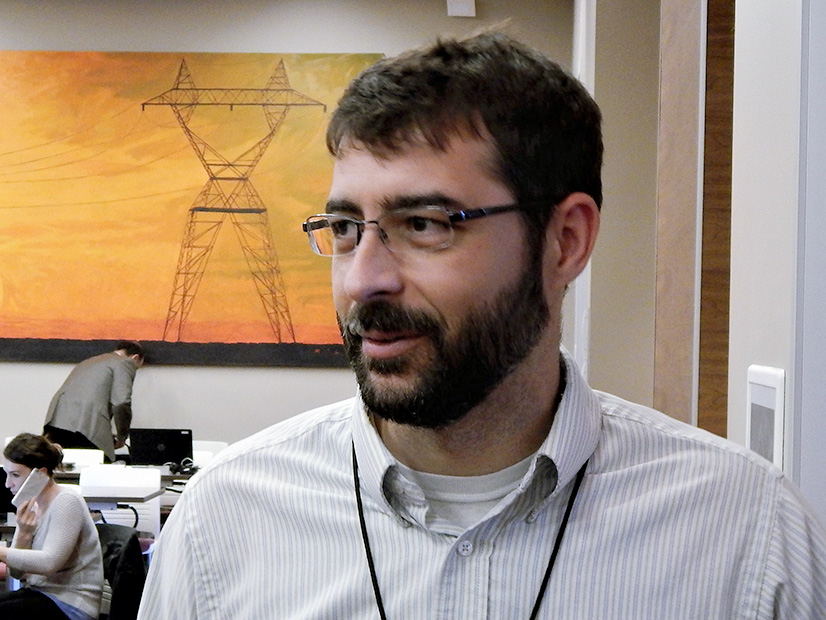MISO and SPP staff and stakeholders discussed transmission reconfigurations and the search for smaller interregional transmission projects Tuesday during their inaugural Common Seams Initiatives (CSI) meeting.
The RTOs announced the biannual meetings last month as a means to better inform stakeholders on how they’re improving seams coordination. (See MISO and SPP Announce New Interregional Stakeholder Meetings.)
Staff said the meetings make sense because both RTOs list seams work as strategic priorities. They will replace the grid operators’ joint operating agreement meetings and no votes will be held.
SPP Senior Interregional Coordinator Clint Savoy said the virtual, informational meetings will span the RTOs’ planning, operations, markets and regulatory activity and serve as an “all-encompassing ‘here’s what we’re working on.’”
RTO staffs said they’re working to create web pages for CSI meetings. Savoy said the grid operators are open to hearing stakeholder-led presentations and that some meetings may be held in-person.
Tuesday, staff focused on five recommendations state regulators handed down to MISO and SPP in early 2021. The Organization of MISO States and SPP’s Regional State Committee’s Seams Liaison Committee (SLC) have advised the RTOs to consider creating targeted market efficiency projects (TMEPs), improve their respective generator interconnection queue processes, track and address rate pancaking at the seams, keep state regulators apprised of long-range planning efforts and devise coordinated transaction scheduling and market-to-market (M2M) interface pricing. (See MISO, SPP Regulators Call for Pancaking Fix, Smaller Projects.)
In February, the grid operators announced plans to conduct a TMEP study this year that will search for smaller, congestion-relieving cross-border transmission projects. (See MISO, SPP Take on 2nd Interregional Planning Effort.)
Savoy said MISO and SPP are aiming for an “easily repeatable” process that could be conducted every year, if necessary. He said the RTOs are compiling two years’ worth of seams congestion data to identify potential projects and will negotiate a cost-allocation design in 2023.
The two have also participated in the SLC’s Rate Pancaking Working Group to inventory instances of rate pancaking and develop solutions.
Debate on MISO Tx Reconfiguration
Savoy said SPP is conducting a constraint management analysis of its day-ahead handling of MISO market-to-market constraints “to see if anything needs to change.” The results will eventually be shared with MISO and stakeholders. (See SPP Reviewing its M2M Processes After MISO Monitor’s Comments.)
Meanwhile, MISO has formed the nonpublic Reconfiguration for Congestion Cost Task Team (RCCTT), which focuses on plans to reroute transmission flows during times of heavy congestion costs. Tony Rowan, senior manager of north reliability coordination, said MISO’s increasing transmission congestion caused some of its northern market participants and third-party vendors to suggest reconfiguration options. Rowan said the requests were unusual and that transmission owners rejected most of the recommendations over reliability concerns.
The RCCTT is maintaining a monthly list of MISO’s top congested constraints, including M2M flowgates. SPP staff said they have been meeting with RCCTT leadership to share their information on flowgate congestion.
EDF Renewables’ Arash Ghodsian pointed out that much of the RTOs’ work to address seams congestion is being done behind closed doors.
“We talk about urgency. Obviously near-term congestion is happening,” Ghodsian said. He asked for future educational sessions on staffs’ work on seams congestion.
Minnesota Public Utilities Commission staffer Hwikwo Ham asked the grid operators to research Iowa’s Interstate Power and Light’s recent transmission reconfiguration, which he said has lowered ratepayer bills.
“Southwest Minnesota is a total mess at this point,” Ham said of the need for reconfiguration. “We are leaving tons of money on the table given the level of congestion in Southwest Minnesota and Iowa.”
American Electric Power’s Jim Jacoby said he is concerned that MISO’s reconfiguration work might harm system reliability.
“I would think you’d want to fix a problem before reconfiguring the system,” he said.
Rowan said some the congestion may already have led to transmission projects. He said RCCTT members are working to avoid simply “masking” congestion problems and keeping them open for project opportunities.
“That is very much at the forefront of discussions in the RCCTT,” Rowan said.
WPPI Energy’s Steve Leovy said the reconfiguration work is focused on congestion caused by temporary, unusual conditions.
“We need to both improve the system and squeeze more out of the system if we can to operate the system as efficiently as we can. … I see room for both,” Leovy said.
Before closing the meeting, MISO’s Jack Dannis said the RTOs are monitoring a possible minimum transmission transfer capacity, as suggested by FERC’s Joint Federal-State Task Force on Electric Transmission.
Dannis said the November CSI meeting will focus on a possible transfer requirement between the regions.
Savoy said SPP intends to include a minimum transfer capacity with MISO in its five-year strategic plan. “This is something we should be discussing and determining how it will look,” he said.
American Clean Power Association’s Daniel Hall thanked the RTOs for teeing up the topic.
“I certainly think the tea leaves are such that FERC will do something in this arena. I think it behooves all of us for MISO and SPP to look into this,” he said.



